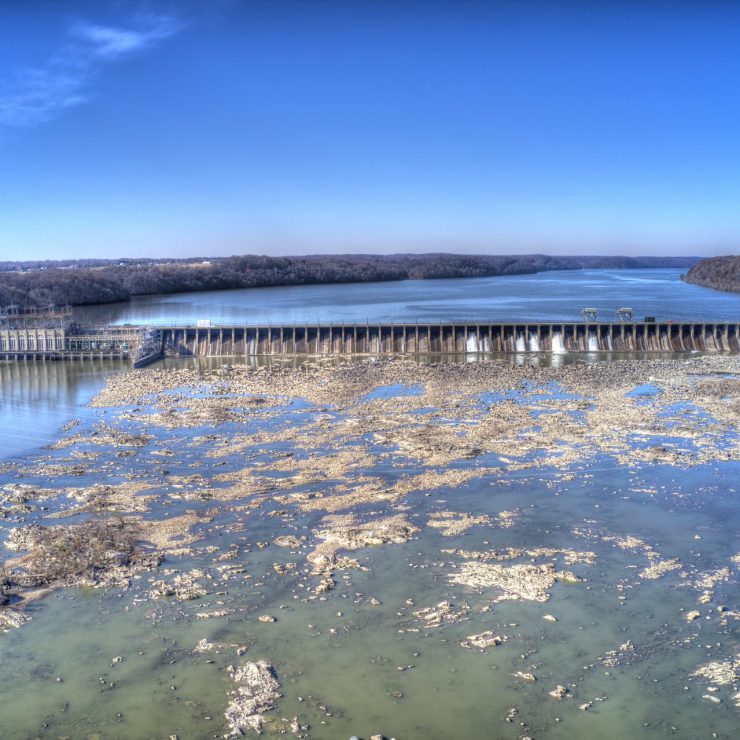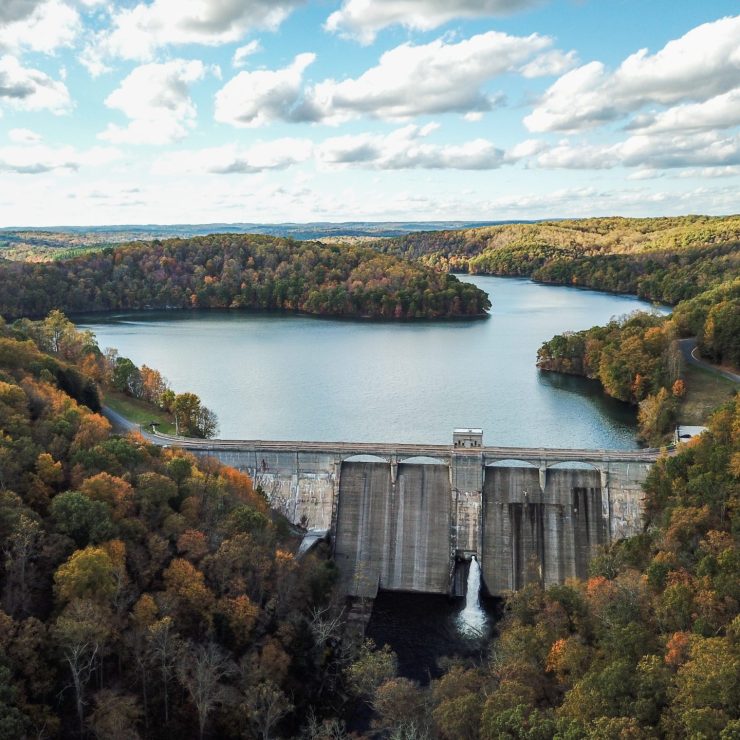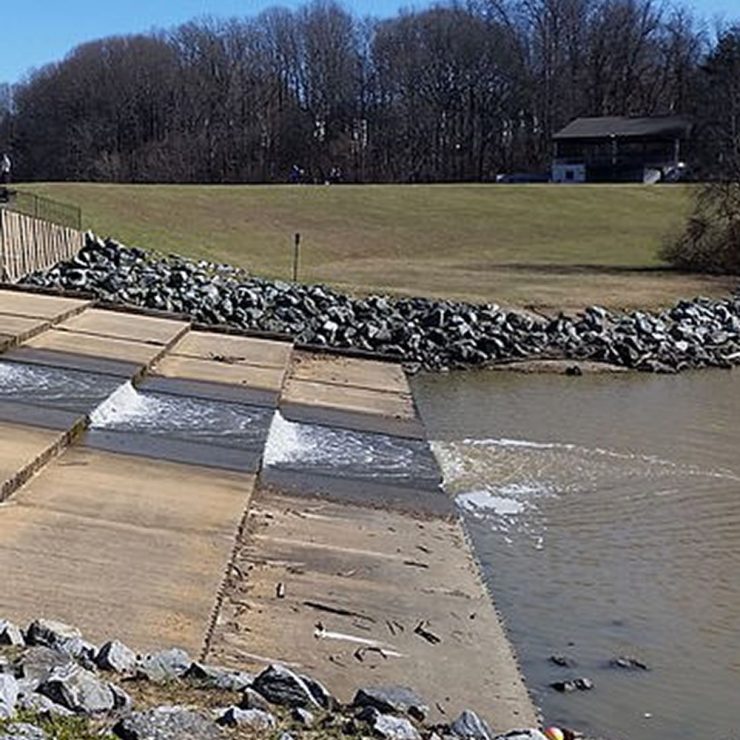By Andrew Sankowski
On May 31, 1889, the South Fork Dam, near Johnstown, Pennsylvania, failed after days of extreme rainfall and decades of improper upkeep, sending massive flood waters into the valley below. The flood tore through the valley, destroying nearly everything in its path including bridges, factories, and towns. The flood claimed more than 2,200 lives, the largest loss of civilian life from a man made disaster in the United States prior to September 11, 2001. [1]
Every year on May 31st, the tragic failure of the South Fork Dam is commemorated on National Dam Safety Awareness Day. Dam safety is a critical component of the work Straughan performs, and there is no better time to highlight the importance of dams and the essential need to maintain dam safety.
Why dams?
Since the beginning of civilization, humans have needed to maximize the usefulness of water resources and minimize destruction from floods and drought. To this end, dams have been used for millennia, providing storage for drinking water and irrigation, flood control, and open water for navigation and recreation as well as improving water quality and generating electricity.
Where are dams?
When we think of dams, we picture massive dams like the Hoover Dam, Grand Coulee Dam, and Three Gorges Dam, and naturally so, with these being some of the largest structures built in human history. Dams this large, however, are rare and typically far away from most people. Smaller dams like municipal water reservoirs, recreational ponds, and ponds in developments tend to be some of the most common and often part of our community landscape. Dams generally can be classified as concrete dams or embankment dams. Embankment (or earthen) dams are made of soil and rock and are the most common dams in use today. [2]
Dam hazards
While dams are essential components of our infrastructure systems, they also present potential hazards. The mass and potential energy of the water impounded by a dam can be devastatingly destructive if the dam were to fail and the water were to be released uncontrolled.
When properly constructed, designed, and maintained, dams pose a very low risk of failure. Poor design, neglect, and catastrophic natural events such as massive rainstorms, hurricanes, or earthquakes can cause dams to fail. When a dam fails and there is an uncontrolled release of water, the resultant flood can cause massive destruction by flooding downstream areas and carrying debris at high velocities. Dams tend to receive public attention only when a failure appears imminent, and unfortunately, this has not been uncommon. In just the past few years there have been many major news stories about dam failures including the Oroville Dam in California [3], the College Lake Dam in Virginia [4], the Whaley Bridge Dam in the United Kingdom [5], the breach of many dams from one storm event in South Carolina in 2015 [6], and, just two weeks ago with the Edenville Dam in Michigan. [7]
Dam safety
Every individual dam carries a potential danger and there are over 90,000 inventoried dams in the U.S. today. [8] This number is far from comprehensive; studies have shown that the National Inventory of Dams only accounts for a fraction of the existing reservoirs. [9] Each dam has a different age, size, condition, use, and hazard potential. [10] The sheer number of dams and the complexity of each dam’s particular circumstances make managing dam infrastructure a difficult task. Today, that task is as difficult as ever, as climate change alters rainfall patterns and development of areas downstream from dams leads to hazard creep. Ultimately, the safe design, construction, operation, and maintenance is the responsibility of the dam owner, but today, 49 of the 50 states have established dam safety regulatory programs that assist dam owners and the public by regulating dams in their individual jurisdictions.
To safely design and operate a dam, the potential danger posed by the dam must be understood. Engineers and owners/operators do this by assigning each dam a hazard classification. Dams are classified as low, significant, or high hazard based on the impacts that would be caused by a breach of the dam.
- Low: no loss of life and limited damage
- Significant: possible loss of life and moderate damage
- High: likely loss of life and significant damage
To determine the hazard classification, engineers perform a dam breach analysis in which hydrologic and hydraulic models are developed where various storm events, the storage of water behind the dam, the breach of the dam, and the resultant downstream floodwave are simulated. Dam breach analyses evaluate a range of weather events from a sunny day scenario with no precipitation, to the probable maximum flood, the largest flood that could conceivably occur at a location. Impacts to structures, roadways, infrastructure, and public spaces are evaluated to determine potential hazards.
Because high and significant hazard dams present the potential for serious damage and loss of life, it is essential to develop an emergency action plan for each of these dams. Emergency action plans provide information and plans that allow dam owners/operators, emergency personnel, and the public to be prepared for any dam safety incidents to save lives and protect property.
Dam removal
Not every dam that exists today is essential. Many dams have outlived their use, deteriorated in condition, cause environmental harm, and/or pose hazards that outweigh the benefits they provide. Some estimate that 75% to 90% of existing dams no longer serve a functional purpose. A resolution to the issues posed by obsolete dams is to remove them entirely. In addition to the removal of the potential safety hazard, many environmental benefits can be realized by the restoration of waters to their natural free flowing states, such as removing obstructions to fish passage, lowering water temperatures, restoring the natural sediment flows, and raising dissolved oxygen levels. [11] However, the adverse effects of dam removal, such as increased downstream flooding or elimination of water quality storage must be considered.
Dam safety at Straughan
Straughan’s Engineers and Planners are proud to play a role in promoting dam safety by expertly performing dam breach analyses, hazard classifications, floodplain modeling, emergency action plan development, new/retrofit embankment design, and dam removal and stream restoration.
Feel free to contact us with any questions about dam safety! https://www.straughanenvironmental.com/contact/
More information about dam safety
Association of State Dam Safety Officials



